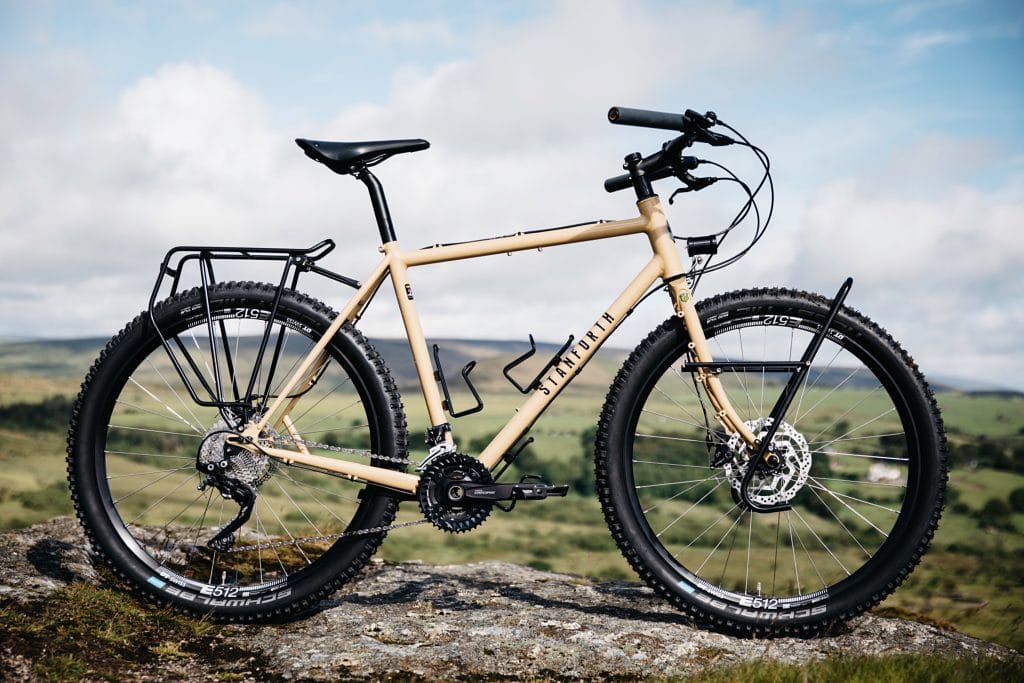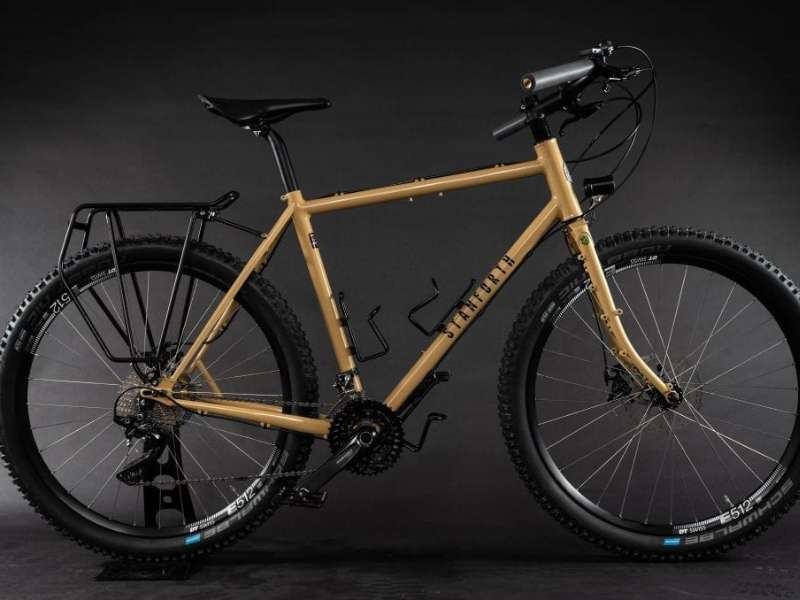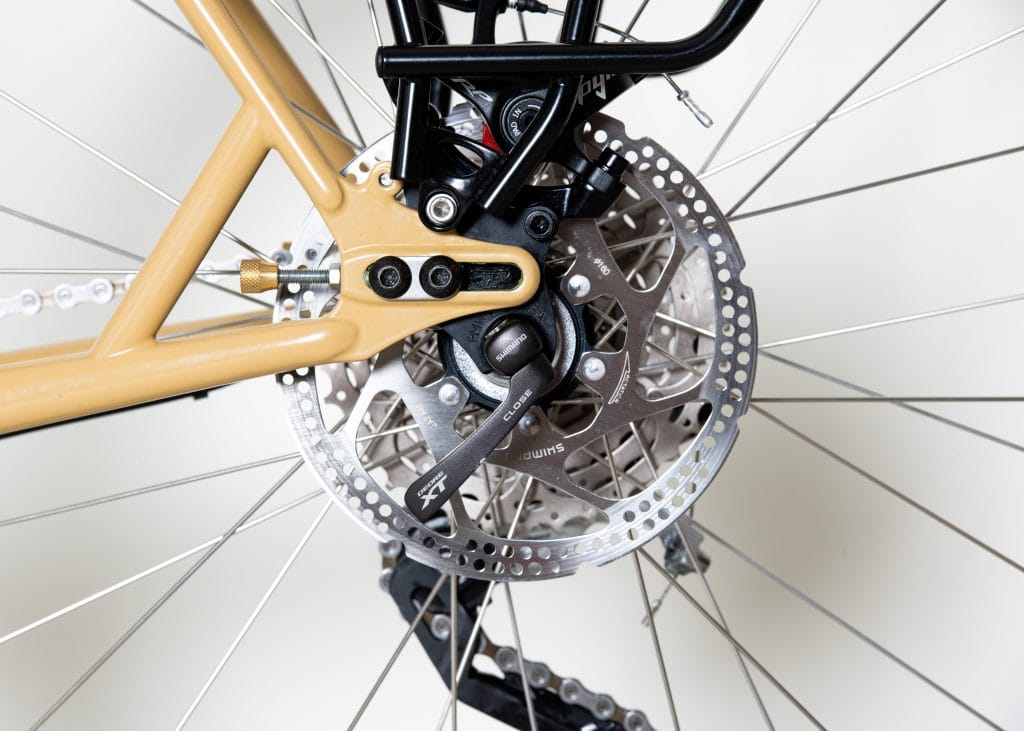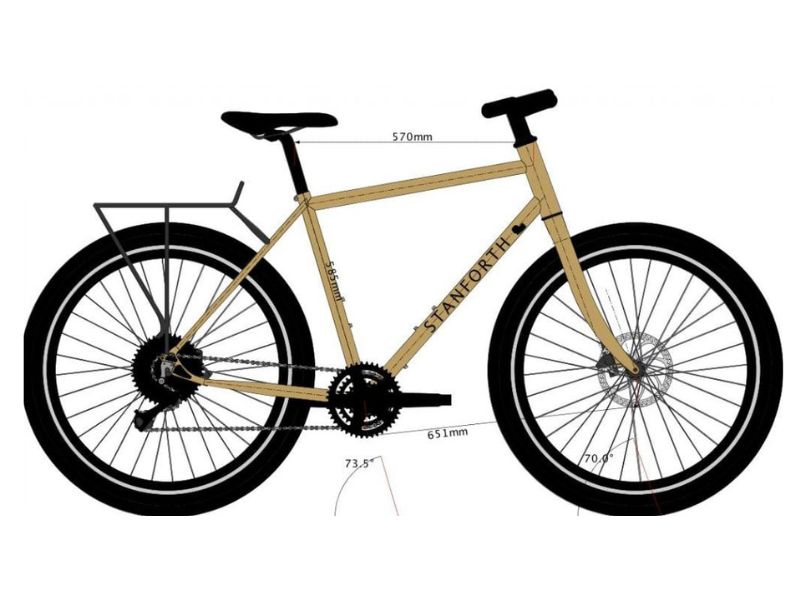Last Updated on 28 January 2025 by Cycloscope

A first impression review of the Stanforth Pamira
specifications, geometry, and more about this handmade customizable extreme adventure bike
In April 2019, the British bike manufacturer Stanforth Bikes released its new beast of burden, the Pamira.
Disclosure: Some of our articles contain affiliate links. This comes at no additional cost for you and helps us keep this website up and running. (as Amazon Associates we earn commission from qualifying purchases)
How we write our reviews: most of our reviews are based on first-hand long-term use or short-term test by a member of our team. For some new models or build variations, we rely on our experience with similar models and our team's experience in understanding bike geometry and components.

This extreme all-terrain expedition touring bike has already raised some sensation in the UK by winning the “Best Touring Bike” award at the Bespoked UK bike show in May 2019, and it’s getting more and more international attention.
The bike is designed for long-distance touring with loaded panniers or a bikepacking setup. It’s called the Pamira after the Pamir Highway where the roads/tracks are particularly rough and where the Pamira would be in its element.
Stanforth Bikes is a one-man company owned by Simon Stanforth, who designs the bikes. All his frames are handmade in England and are mostly made by the well-known frame-builder Lee Cooper. We interviewed Simon some months ago, you can have a look at the interview here.
Stanforth already has an expedition touring model, the Kibo, which is actually the rig we are using for our journey through Europe and Africa, so why another model? Well, first of all, this is a 700c touring bike, opposite to the 26″ Kibo, but the difference of course doesn’t lay just here, let’s have a look more in-depth.
Looking for a touring rig? Check also
- 20 best touring bikes under 2,000$
- 18 great adventure bicycles under 1,000$
- Stanforth Kibo review after a 15,000km test
- Ribble Adventure 725 – Overview
- The 2019 Dawes Super Galaxy and Dawes Ultra Galaxy
Do you have no budget?
Stanforth Pamira: The Frame

The frame is handbuilt in the UK using a combination of heat-treated Reynolds 853 and 725 steel in the main triangle, and air-hardened 631 in the rear triangle.
It has bosses for front and rear racks as well as the 3-mount system on the forks for carry-anything cages. It also has bosses for 4 bottle cages and mounts for mudguards.
The Stanforth Pamira has routing for both Rohloff and derailleur gearing, with dropout inserts easily switchable between the two (two different dropouts, sliding with inserts – which means that the gear system can be switched to Rohloff by just changing the insert).
The tube diameters are bigger than the Kibo, 34.9mm for the down tube and 32.8mm for the top, for increased stiffness on the rough ground so there is less flex with a load, the walls are thick enough to give the right combination of strength, weight, and comfort.
The Stanforth Pamira has a maximum clearance of 27.5” x 2.4” tires or 700c x 2.2”, which should be enough to provide comfort and grip on most single tracks, thus making it suitable for off-road bikepacking expeditions.
Like all Stanforth Bikes, the Pamira frames are made to order, with no standard sizes but tailored to the customer.
The Fork
With six brazed-on eyelets for rack and backpacking cages on each side of the fork, the Pamira has plenty of mounting points to suit a wide variety of configurations. The fact that those eyelets are external to the structure of the fork, instead of being cut out from the blade – although it might look a bit weird – is actually a great plus, the strength of the fork is not at all compromised this way.
The fork rake (or offset) is 61/66mm, 4 to 6mm more than the Kibo—but that’s mostly because of the bigger wheels—which results in slightly slower handling at low speeds but much more stability. The rake is obtained by the curvature of the fork blades, which in turn gives a more cushioned feeling on rough pavements, a sort of “natural” suspension (thanks also to the flexibility of the steel).
Stanforth Pamira: Components

The Pamira wheels are a sturdy combo of Tubless Ready DT Swiss E512 32 holes rims, with a choice between 27.5″ or 700c (29″), Shimano Deore XT M8000 center-lock disc hubs, and Schwalbe Nobby Nic 27.5 x 2.35″ or Schwalbe Marathon Plus MTB 700c x 2.1″.
Other components include a choice of Jones H-Bend bars or Jones Loop bars, Microshift friction/index shifters, and a Cambium C17.
There are a number of gearing options including double and triple chainsets, or a Rohloff speedhub. The excellent MTB TRP Spyke mechanical disc brakes provide the stopping power.
These are just the standard components though, as usual with Stanforth almost everything is customizable, e.g. dynamo hubs, different bars, etc.
Pamira Geometry

Chainstays are pretty much similar to the Kibo at 470 (467-8 on the Kibo), it’s really down to the bigger wheel/tire. They are relatively long chainstays, increasing the wheelbase for stable riding with a load, a bit longer than most of the bikepacking bikes out there as this bike is intended for long-distance loaded touring as opposed to a few days bike packing with lighter loads.
The increased fork rake we already mentioned, it does basically ensures the handling is a good combination of steady and controlled steering with a front load on rough terrain. It also ensures the front center measurement is sufficient for toe clearance with the 700c/29er x 2.2″ tyre.
The seat angle is also a little sharper at 73.5° in order to shift more weight to the front for more front-end control on rough terrain while also helping to increase the front-center measurement for toe clearance.
This bike is fillet brazed as angles are more limited with lugs, especially with those wide tube diameters. Overall the bike is intended to be the perfect expedition bike for loaded touring on really rough tracks and roads which aren’t actually roads.
- Seat Tube Angle – 73.5°
- Fork Rake – 61mm/66mm
- Chainstay – 475mm
- Top Tube C-C and Seat Tube C-T are made to fit.

